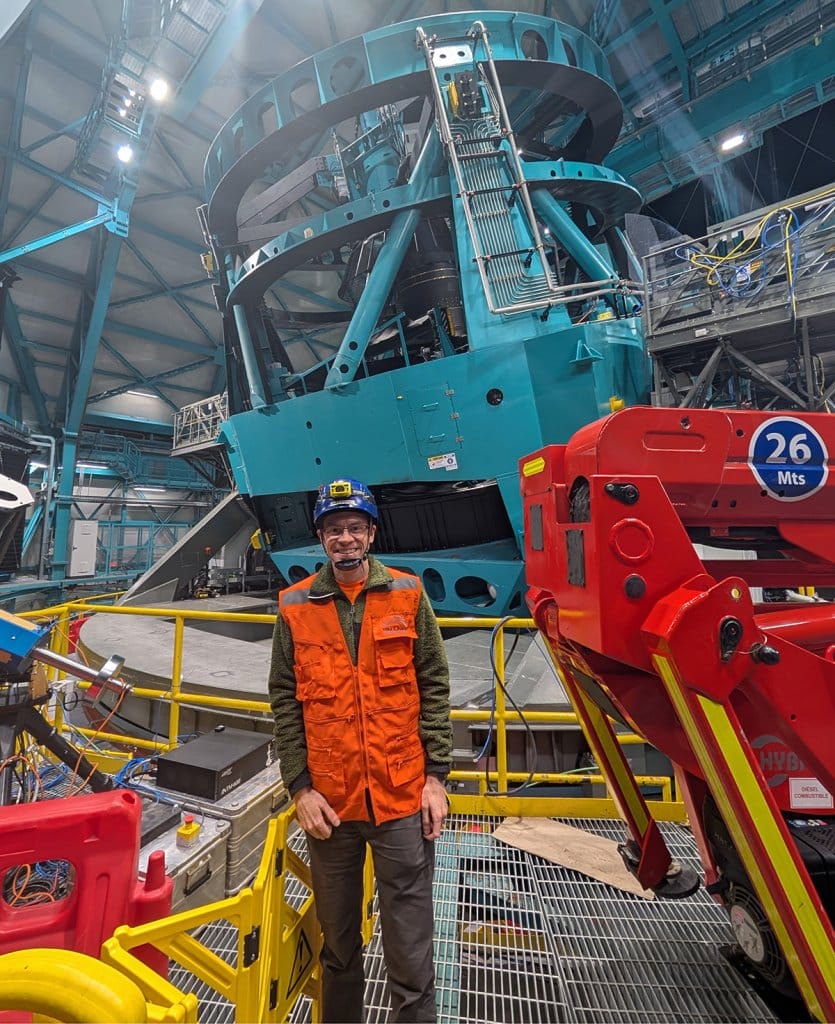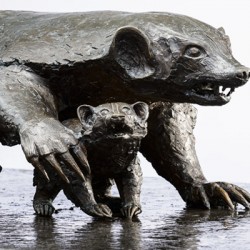A Closer Look at the Cosmos
UW–Madison physicists play a key role in an innovative observatory.

Bechtol: “We’re using the whole universe as a laboratory to ask big, open questions about the nature of matter, energy, space, and time.” Courtesy of Keith Bechtol
The first images from a state-of-the-art telescope have been released by the Vera C. Rubin Observatory, with an assist from UW–Madison physics professor Keith Bechtol.
“Rubin Observatory is a confluence of technology that allows us to map the universe faster than we’ve ever been able to before,” Bechtol says. “It will catalog more stars, galaxies, and solar system objects during the first year of science operations than all previous telescopes combined.”
Space-based telescopes like Hubble and James Webb typically focus on one spot for a prolonged time. In contrast, the ground-based Rubin Observatory, positioned on a mountaintop in Chile, will quickly scan the sky, taking an image with its 3.2-billion-pixel camera every 40 seconds and collecting 20 terabytes of data each night. It will capture the entire southern hemisphere sky every three nights.
Bechtol has been part of the international collaboration since 2016. He is one of five technical group leaders who are organizing the building, implementation, and testing of the facility. Bechtol and his UW–Madison research group have been key players on a team of thousands of people working toward a fully operating observatory.
“I gather the evidence to show that all components of Rubin Observatory are working together to produce the most detailed time-lapse view of the cosmos ever made,” Bechtol says. “I’ve been responsible for anticipating things that could go wrong and helping to address those challenges, designing observation plans, rehearsing observatory operations, and implementing tests of increasing sophistication as we built the observatory.”
Bechtol and his group will use the data to probe fundamental questions related to dark matter, dark energy, and the early universe.
“We’re using the whole universe as a laboratory to ask big, open questions about the nature of matter, energy, space, and time,” Bechtol says. “What is the universe made of? How did the universe begin? How will it end?”
Published in the Winter 2025 issue



Comments
No comments posted yet.